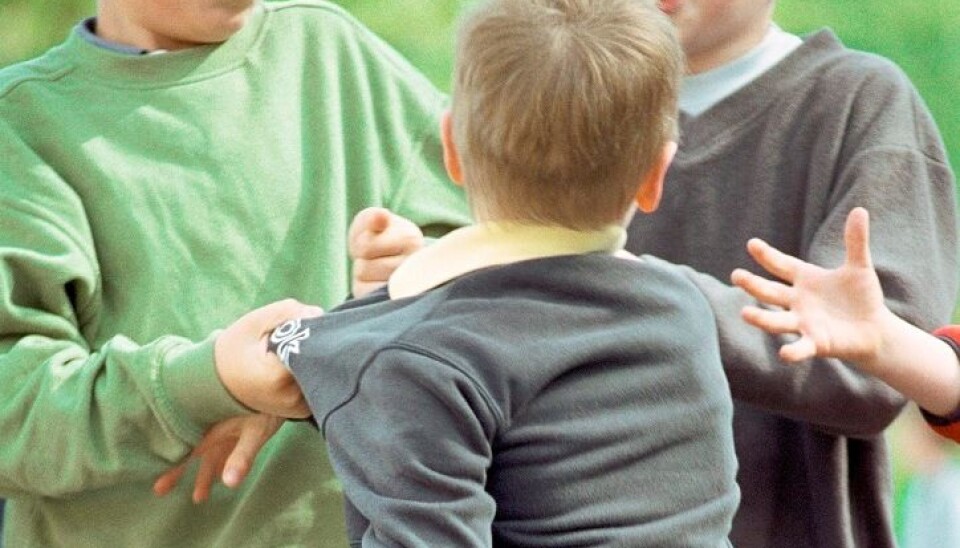
Headmaster can halt bullying
Bullying is less of a problem in schools with principals or headmasters who have the confidence of their pupils and teachers. The head of the school can set the standard for acceptable behaviour.
Punches, kicks, social exclusion and offensive text messages. Thousands of Norwegian school kids are bullied every day.
This is a challenge that needs to be confronted by sound leadership, according to the researcher behind a new study.
“The principal is vital for averting and coping with bullying,” says Sigrun Ertesvåg. She is a professor at the University to Stavanger’s Centre for Learning Environment.
She has found a correlation in primary schools between respect for and confidence in the principal and problems with bullying.

“There’s plenty of focus on bullying and Norwegian schools put loads of emphasis on implementing countermeasures throughout the school. Nevertheless, surprisingly little research has been conducted on the role of the principal,” she says.
Joint reactions
Her work is the first large Norwegian study that points to a link between bullying and school administration, gauged by confidence in the school’s principal.
The study does not pinpoint exactly why there is such a connection.
As she has not studied the schools for extensive periods, Ertesvåg is in no position to determine whether good leadership yields a reduction in bullying. Theoretical work and indications from earlier studies are the departure point for suggesting possible explanations.
“We know that it’s easier to counteract bullying by acting in unison. This requires a coordinated effort from the teachers, and that in turn hinges on strong leadership,” says Ertesvåg.
Ertesvåg says that the pupils’ mutual relationships and their interaction with teachers are still more important factors than the role of the principal. But this study shows that the principal should not be omitted.
“Earlier studies show that the principal plays a big role, also in implementing measures against bullying.”
She points out that anti-bullying campaigns are often mismanaged by schools.
Many schools have poor routines for preventing and responding to the problem.
A survey carried out by the Nordic Institute for Studies in Innovation, Research and Education (NIFU)’s Step Centre for Innovation Research, on assignment from the Norwegian Directorate for Education and Training in 2010, revealed that half of Norway’s schools lacked sufficient routines for dealing with bullying.
She asserts that the principal can contribute to joint standards regarding what is acceptable behaviour at a school.
“For instance if all the teachers intervene in the same way when pupils speak disparagingly or mistreat one another, the kids cannot play the teachers against one another.”
Principal influences teachers
About six percent of elementary school children and five percent of junior high school kids answer that they are bullied twice a month or more, according to a major Norwegian survey, Elevundersøkelsen 2013.
“It’s pretty certain that the principal and the school administration have an impact on the pupils’ environment at a school,” says Thomas Nordahl, professor of education at Hedmark University College.
He is conducting a study in Denmark that shows a slight connection between a school’s administration and its teachers and the learning environment. The learning environment encompasses contentment at school and relationships among pupils and between pupils and educators.
“I think the principal influences bullying indirectly through the teachers and the learning environment, which in turn has an impact on the pupils,” says Nordahl.
He points out, however, that the Ertesvåg’s study deals with only a limited array of factors. A lot of other issues can have an effect on bullying, such as classroom leadership, teaching, relations between educators and pupils and relations among pupils.
Should see what the principal does
Ertesvåg asked teachers whether the principal has the confidence of the pupils and teaching staff.
“This is a sign of whether the principal does a good overall job. At the same time, maybe it would be more interesting to see what the principal actually does as a leader,” says Thomas Nordahl.
“First of all, we need to find out more about the correlation between management and bullying. Then we can get a closer understanding of why this is,” says Sigrun Ertesvåg.
In another study she found a link between bullying and poor collaboration among teachers.
Signals about behaviour
“An example of cooperation could be that teachers agree on a common way to start the day. This gives a general signal to the pupils about how they are expected to behave, for instance being punctual, greeting properly and caring for one another,” says Ertesvåg.
She thinks the pupils are quick to notice whether the teachers don’t collaborate well.
“They can easily detect a negative tone between the teachers who are on patrol during recesses.”
But it’s hard to determine what is the cause and what is the effect – which comes first. A lot of bullying and commotion in a school can also undermine cooperation between the teachers.
“The effects can be mutually reinforcing as time goes by,” says Ertesvåg.
------------
Read the Norwegian version of this article at forskning.no
Translated by: Glenn Ostling
































